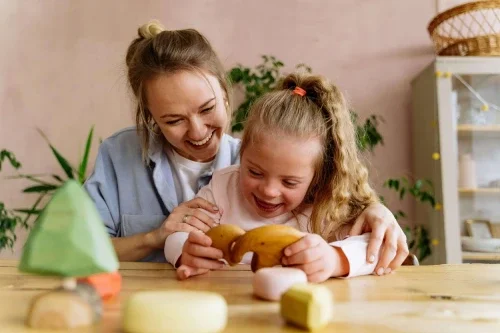A Look at the Different Tools in Play Therapy and Why They Work
If you've ever watched a child completely absorbed in play, you've witnessed something magical. In that moment, they're not just having fun, they're processing their world, working through emotions, and making sense of their experiences. As a registered play therapist, I've seen firsthand how the right tools can unlock a child's ability to heal, grow, and express what they can't yet put into words. In my practice, I've witnessed children work through complex trauma, anxiety symptoms, and life transitions through play. A child who can't tell you they're angry might crash toy cars together. Another who feels powerless might become the superhero who saves the day. This isn't just playing, it's healing.
Essential Categories of Play Therapy Tools
Art supplies, clay, and sand trays hold a special place in play therapy because they allow for non-verbal expression. Children create powerful stories in sandboxes, building worlds that reflect their inner experiences. A child dealing with family changes might create a house with walls around it, or someone processing grief might bury objects in the sand only to uncover them later. Clay is particularly wonderful because it can be transformed endlessly, just like our capacity for healing and growth. Children can pound it when they're angry, shape it into something beautiful when they're feeling creative, or simply hold it for comfort.
Nurturing and Family Play
Dolls, dollhouses, and baby bottles help children explore relationships and caregiving. These tools allow children to reenact family dynamics, practice nurturing behaviors, or work through attachment concerns.
Power and Control Tools
Toy soldiers, swords, and superhero figures help children explore themes of power, protection, and control. This is especially important for children who have experienced situations where they felt powerless. These tools help children feel empowered and work through feelings of vulnerability. A child might use the superhero to protect the smaller figures, or create battles where good ultimately triumphs over evil.
Sensory and Calming Tools
Fidget items, stress balls, and textured materials help children regulate their nervous systems. Some children need to move and touch while they process emotions. These tools honor that need and can actually enhance their ability to engage in therapy. Many of the children I work with have experienced trauma, and their bodies hold that stress. Sensory tools help them feel grounded and present in their bodies again.
How Different Tools Address Different Needs
Children dealing with anxiety often benefit from tools that help them feel more in control. Puppets allow them to express worries through the puppet's voice, while art materials let them externalize anxious feelings through color and form. Building blocks and construction toys can be particularly helpful because they allow children to create something solid and stable, a metaphor for the security they're seeking.
For Children Processing Trauma
Children who have experienced trauma need tools that help them feel safe while processing difficult experiences. Sand tray therapy is particularly effective because it allows them to create and recreate scenarios at their own pace, with complete control over the narrative. Miniature figures become powerful symbols, allowing children to work through traumatic experiences from a safe distance. They can be the powerful protector they need, or create scenarios where they survive and thrive.
For Children Struggling with Depression Symptoms
When children experience sadness or withdrawal, expressive arts tools can be a lifeline. Sometimes a child can't tell you they're hurting, but they can show you through a drawing or by the colors they choose. Musical instruments and movement activities can also help lift energy and mood. I've seen withdrawn children come alive when they discover the drums or when they're invited to dance out their feelings.
These tools are important, but they're meaningless without the therapeutic relationship. As a play therapist, my role is to create a safe, accepting environment where children feel truly seen and understood. If you notice your child's play becoming stuck in concerning themes, or if they're showing signs of emotional distress that interfere with their daily life, consider therapy for children. Children have an incredible capacity for healing when given the right environment and support. Reach out today to learn more.

